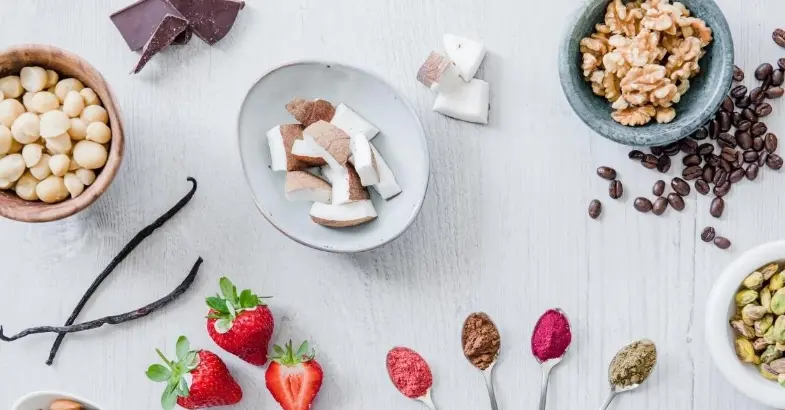Are The Low Fat Foods Making You Fat?
Our supermarkets are loaded with the low-fat and fat-free products. Name a product, and most likely there is a reduced-fat version of it available in stores. We have lean meat, low-fat hot dogs, skim milk, low-fat mayo, fat-free dressings, and even fat-free cookies, cakes and ice cream. Industry analysts estimate the sales of low-fat and fat-free products in the United States to be around three billion dollars per year. With all these “slimmed down” food options available, why are we getting fatter and fatter every year? Why don’t the low-fat and fat-free foods “cure” obesity?

The answer is that most people don’t understand that they CAN gain weight even if they are eating 100% fat-free products. They believe that the fat-free treats are “innocent”, and overindulge on the low-fat cookies, fat-free muffins, processed snacks and other low-fat “goodies”. Then these people claim that they eat “healthy”, and are surprised that they are still gaining weight.
Believe it or not, I’ve even met some people who go as far as thinking that by eating low-fat products they will burn fat! They eat huge amounts of fat-free foods thinking that the more of this stuff they’ll eat, the more weight they’ll lose… Needless to say, they achieve the opposite effect from their “fat-burning” intentions.
Here’s the scoop on the low fat-foods: it’s all about the calories and the quantities of what you eat. Quantity by quantity, low-fat products tend to have fewer calories than their full-fat alternatives. For example, one cup of fat- free milk has about 35% fewer calories than one cup of whole milk.
If you eat the same quantity of low-fat substitute as you would if you were eating a full-fat product, you’ll be better off with a low-fat version. In fact, if you ate the same quantities of food that you do now, but replaced all food products with low-fat or fat-free versions, you would lose weight. When used correctly, reduced-fat products are a great help for losing weight.
However, if you switch to low-fat foods, but eat bigger portions than you ate before, you will gain weight. For example, if instead of drinking one cup of whole milk every morning you will start drinking 2 cups of fat-free milk, you’ll increase the total calories instead of decreasing them. Portion size is critical. It is much better to eat one full-fat cookie than a box of fat-free cookies!
Another thing you should watch out for is that “low in fat” does not always mean “low in calories”. Many times fat-free products are loaded with sugar to compensate for the lack of fat. Sometimes they have about the same number of calories per serving as full-fat versions. Always look at the food labels! For example, one fat-free muffin usually has around 200 calories… This makes 2 fat-free muffins have more calories than a cheeseburger!
In addition, many reduced fat products are lacking in taste. Therefore, before substituting, follow this rule: are the saved calories worth the decreased taste? Some low-fat products taste pretty good, while others are plain disgusting. Many times, low-fat version tastes OK, while fat-free just does not cut it – in this case, go with low- fat.
Look at the calories per serving – if the reduced fat product only saves 10 calories per serving, but tastes much worse than the original, it is not worth using. However, if it cuts calories significantly and tastes decent, it is really worthwhile… as long as you remember to watch your portions.
Read:
- Why You Should Lose Weight Now! – stay full fit
- Take the Mystery out of the High-Protein, Low-Carbohydrate Diet – stay full fit
- Is Low-Carb Really The Way To Go? – stay full fit
Post Comment